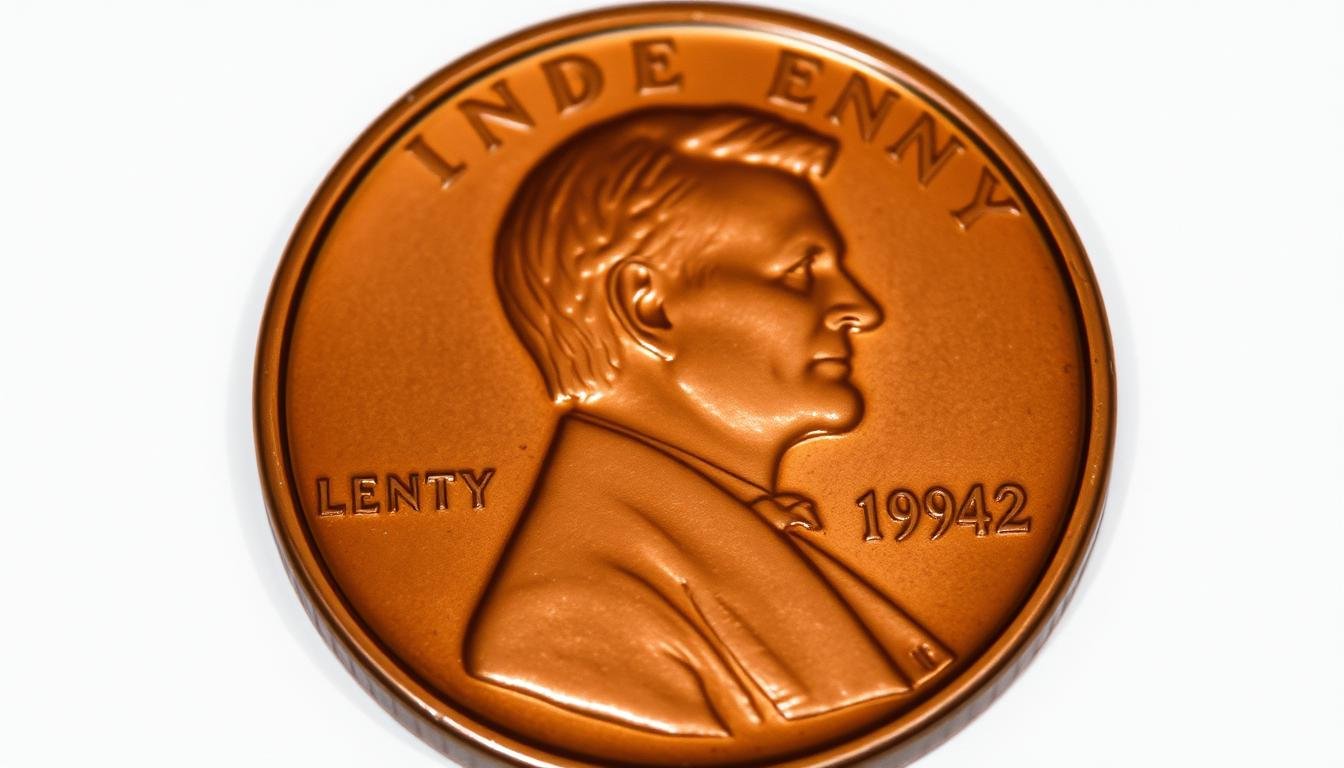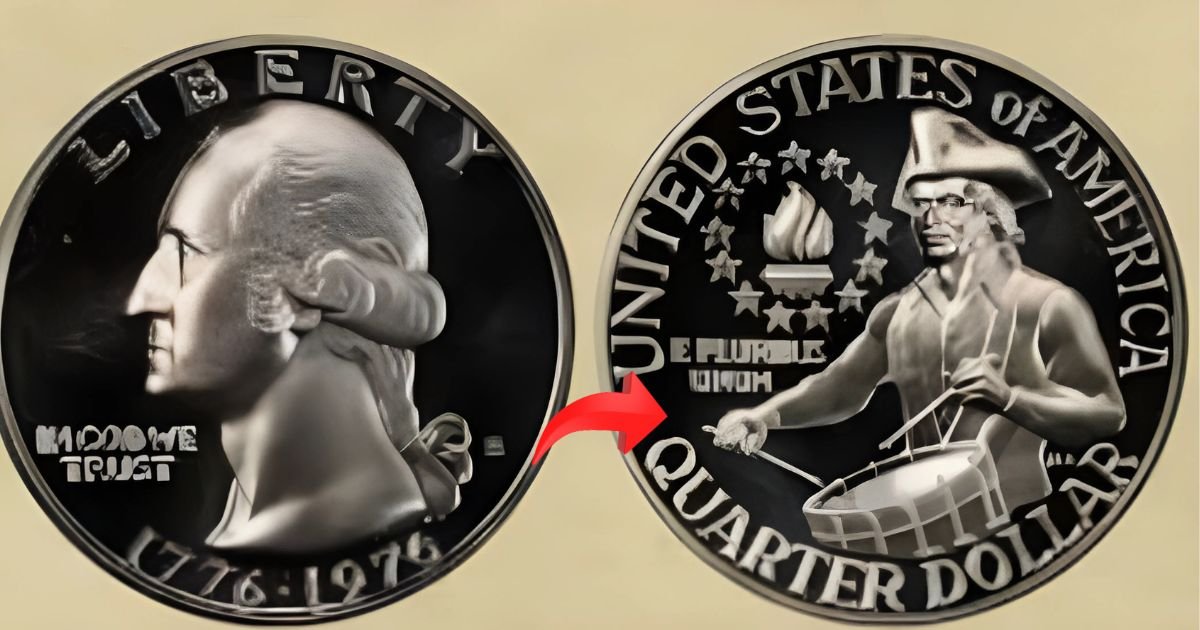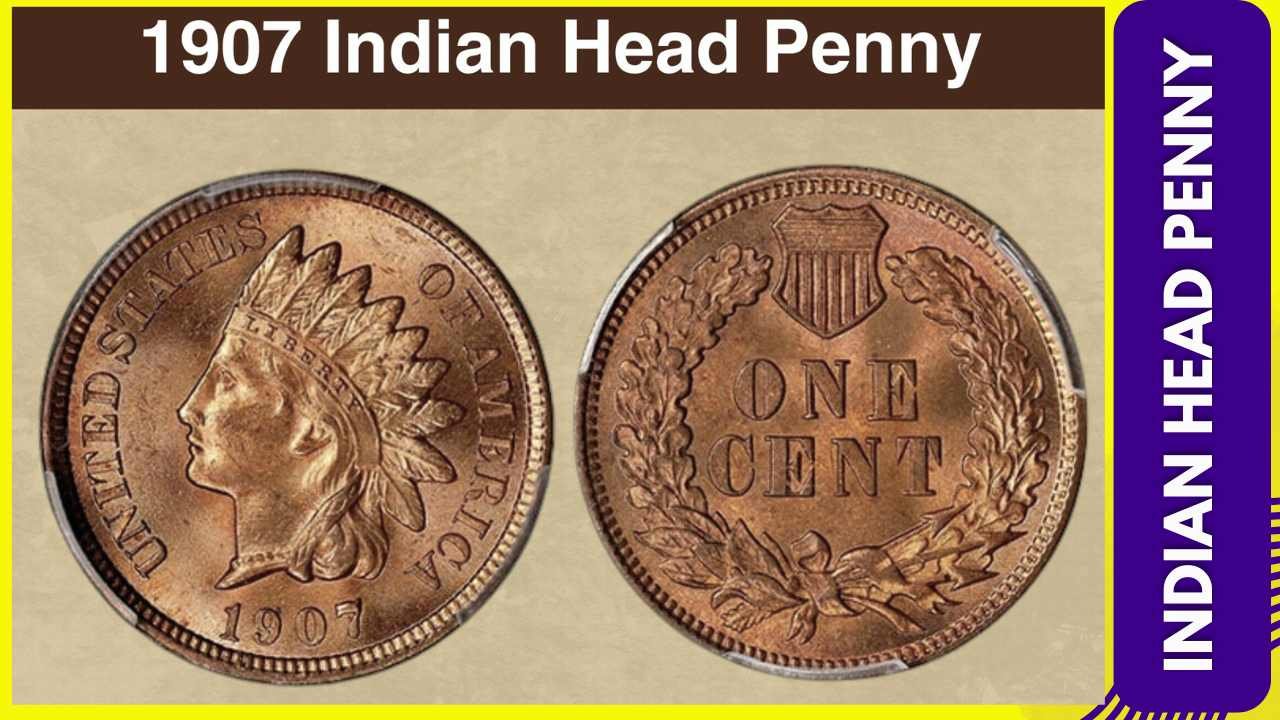The Lincoln Cent, minted by the United States Mint since 1909, is one of the most collected US coins. The 1942 issue, in particular, holds significant historical importance and potential collector value. Minted during World War II, these coins represent a unique period in American history.
The value of a 1942 Lincoln Penny can vary dramatically, from a few cents to several thousand dollars, depending on factors like mint marks, condition, and rare errors. Whether you’ve found one in your change or are building a collection, understanding what makes these coins valuable is crucial.
This comprehensive guide will explore the historical context, identification, and valuation of the 1942 wheat penny, helping you determine if you have a common specimen or a rare treasure.
Table of Contents
The Historical Significance of the 1942 Wheat Penny
The year 1942 was pivotal for the United States, and the Wheat Penny minted that year reflects this significance. As the country was fully engaged in World War II, the production of coins was affected by the war effort.
World War II and Its Impact on Coin Production
When the U.S. entered World War II in 1941, copper became a highly demanded metal for military equipment and ammunition. The cent, being made of copper, posed a problem for the US Mint. As a result, in 1943, the composition of the cent was changed to zinc-coated steel to conserve copper. The 1942 Lincoln Wheat Penny was the last copper penny produced before this transition.
- The 1942 Wheat Penny represents the last full year of traditional copper composition.
- It serves as a tangible piece of home front history, reflecting how wartime resource allocation affected everyday currency.
The Last Copper Penny Before the Steel Transition
The 1942 Wheat Penny is significant not only because of its metal composition but also due to its historical context. It bridges pre-war and wartime American coinage, making it a valuable component in Lincoln cent collections. The historical significance and numismatic value of the 1942 Wheat Penny are enhanced by its condition, with well-preserved specimens being particularly valuable.
Collectors view the 1942 Wheat Penny as a transitional piece, and its value extends beyond its metal content. The coin’s historical context and condition play a crucial role in determining its worth.
Physical Characteristics of the 1942 Wheat Penny
The physical attributes of the 1942 Wheat Penny, including its design and material, are worth examining closely. This coin’s distinct features make it a fascinating piece among collectors and numismatists.
Obverse Design Features
The obverse of the 1942 Wheat Penny features a portrait ofAbraham Lincoln, designed by Victor David Brenner. The coin includes the motto “IN GOD WE TRUST” above Lincoln’s head, the word “LIBERTY” to the left, and the year “1942” to the right. The initials “VDB” are subtly integrated into the design on Lincoln’s shoulder.
Reverse Design Features
The reverse side of the coin showcases two stalks ofwheatframing the central text, which is why it’s known as the Wheat Penny. The denomination “ONE CENT” is prominently displayed, with “UNITED STATES OF AMERICA” below and “E PLURIBUS UNUM” above.
Size, Weight, and Composition
The 1942 Wheat Penny is composed of 95% copper and 5% zinc and tin. It has a diameter of 19.05mm and weighs approximately 3.11 grams. The coin’scompositionanddesigncontribute to its distinctive reddish-brown color, which darkens over time due to oxidation.
Understanding 1942 Wheat Penny Mint Marks
Understanding the mint marks on 1942 Wheat Pennies is essential for collectors to identify and value their coins correctly. The mint mark is a small letter or symbol on the coin that indicates which U.S. Mint facility produced it.
Philadelphia Mint (No Mint Mark)
The Philadelphia Mint produced the largest number of 1942 Wheat Pennies, with a total of 657,796,000 coins. These pennies carry no mint mark and are the most common, making them relatively accessible to collectors of all levels.
Denver Mint (D)
The Denver Mint produced 206,698,000 pennies in 1942, which is significantly fewer than the Philadelphia Mint. These coins display a small “D” mint mark below the date on the obverse side, making them somewhat more valuable than their Philadelphia counterparts.
San Francisco Mint (S)
The San Francisco Mint had the smallest production, minting just 85,590,000 Lincoln pennies in 1942. These coins are identified by an “S” mint mark and are the most valuable of the regular issues due to their relative rarity.
The location of the mint mark on 1942 Wheat Pennies is on the obverse (front) side, appearing below the date to the right of Lincoln’s portrait. Understanding mint marks is crucial for proper identification and valuation, as the difference between a no-mint mark Philadelphia penny and an “S” mint mark can mean a substantial price difference, especially in higher grades.
- Mint marks indicate which U.S. Mint facility produced the coin, a crucial factor in determining its rarity and value.
- The Philadelphia Mint produced the most coins, with no mint mark, making them the most common.
- The Denver Mint and San Francisco Mint produced fewer coins, with “D” and “S” mint marks, respectively, affecting their value.
Grading the 1942 Wheat Penny
Understanding the grade of your 1942 Wheat Penny is essential for determining its value in the collector’s market. Grading is a critical process that assesses the condition of a coin, which in turn affects its worth.
The Sheldon Grading Scale Explained
The Sheldon Grading Scale is the most widely used grading system in numismatics, ranging from 1 (Poor) to 70 (Perfect Mint State). Coins that score between 60 and 70 are considered to be in Mint State (MS) condition. Professional grading services like PCGS and NGC utilize this scale to evaluate the condition of coins.
Color Classifications: Red, Red-Brown, and Brown
Copper coins, like the 1942 Wheat Penny, are also classified based on their color, which is a result of how the copper reacts to environmental exposure. The classifications are Red (RD) for coins retaining 95% or more of their original copper color, Red-Brown (RB) for those with 5-95% original color, and Brown (BN) for coins with less than 5% original color.
How Grading Affects Value
The grade of a 1942 Wheat Penny significantly impacts its value. A higher grade indicates better condition and more original detail, making the coin more valuable. For instance, a 1942 Wheat Penny in MS-65 Red condition can be worth substantially more than the same coin in MS-65 Brown condition, highlighting the importance of both grade and color preservation.
Key factors to consider:
- Grading services provide authentication and standardized evaluation.
- The difference between consecutive grades can represent substantial value changes.
- Color classification significantly impacts the coin’s value.
1942 Wheat Penny Value Guide
The value of a 1942 Wheat Penny can range from a few cents to thousands of dollars, depending on its condition and rarity. This significant variability is due to several key factors, including the coin’s mint mark, its state of preservation, and its color classification.
No Mint Mark Penny Values
For 1942 pennies minted in Philadelphia (no mint mark), the value can vary greatly. In circulated condition, they are typically worth between 5-25 cents. However, uncirculated specimens can fetch anywhere from $1-$5 for MS-60 graded coins to over $3,000 for MS-67+ Red examples. A notable sale was an MS68 specimen that sold for $3,960 at an auction in 2021.
1942-D Penny Values
The 1942-D Lincoln Cent, minted in Denver, is relatively common. While MS66 examples are somewhat harder to find, thousands likely remain in uncirculated rolls. The value for circulated 1942-D pennies ranges from 10-50 cents, while uncirculated Red specimens can be worth $2-$10 in MS-60 to $8,000+ in MS-68. A Red 1942 Wheat Penny graded MS68 sold for $12,650 in 2008.
1942-S Penny Values
San Francisco-minted 1942-S pennies are the most valuable of the regular issues. Even in circulated condition, they are worth 15-75 cents. Uncirculated Red specimens can command $5-$15 in MS-60 to an impressive $9,500+ in MS-67+. The record for this variety was $12,650 when an MS68 was sold in 2006 at Heritage Auctions.
Key factors influencing the value include the coin’s condition, mint mark, and color. Red specimens are typically worth 3-5 times more than Brown examples in the same grade. The highest recorded auction prices demonstrate the potential high-end value of these coins.
Factors That Determine a 1942 Penny’s Worth
Several critical factors contribute to the value of a 1942 Lincoln wheat penny. Understanding these elements is essential for collectors and enthusiasts looking to buy or sell this particular coin.
Condition and Grade
The condition and grade of a 1942 wheat penny significantly impact its worth. Coins in better condition, with minimal wear and tear, are more valuable. The grade of the coin, which includes factors like original mint luster, strike quality, and surface preservation, plays a crucial role in determining its value. Even minor contact marks or fingerprints can reduce the value by 50% or more in high-grade examples.
Mint Mark Rarity
The mint mark rarity is another critical factor that affects the value of a 1942 wheat penny. Pennies minted in San Francisco (S) are more valuable due to their relatively low mintage of 85.5 million compared to Denver’s 206.7 million and Philadelphia’s 657.8 million. As a result, San Francisco pennies command the highest premiums among collectors.
Demand Among Collectors
Market demand among collectors also influences the value of a 1942 wheat penny. Fluctuations in collector trends, such as increased interest in World War II memorabilia, can drive up the value of 1942 issues. Additionally, the presence of original toning versus artificial enhancement and the provenance (ownership history) can add value to certain specimens.
- The condition of the coin is the primary driver of its worth.
- Mint mark rarity significantly impacts the value.
- Collector demand and trends can fluctuate the market value.
Valuable 1942 Wheat Penny Errors to Look For
The 1942 Wheat Penny is a highly sought-after coin among collectors, and certain errors can significantly increase its value. Error coins, particularly those from 1942, are highly prized for their rarity and unique characteristics.
Doubled Die Errors (DDO)
A Doubled Die Error (DDO) occurs when the die is struck twice, resulting in a doubling effect on the coin’s design elements. The 1942 Philadelphia Mint produced four DDO varieties (FS-101 to FS-104), with prices ranging from $475 to $1,200 for coins in MS-65 condition.
Re-Punched Mint Marks (RPM)
Re-Punched Mint Mark (RPM) errors happen when the mint mark is punched multiple times in slightly different positions. Varieties like 1942-D/D (FS-502 to FS-504) and 1942-S/S (FS-512) can be worth $1,130 to $1,763 in MS-67 Red condition.
Off-Center and Wrong Planchet Errors
Off-center strikes and wrong planchet errors are other valuable mistakes. Off-center coins can be worth $200 to $2,500, depending on the misalignment and visibility of the date and mint mark. Wrong planchet errors, such as a 1942 penny struck on a silver dime planchet, can sell for over $14,000.
These errors make the 1942 Wheat Penny highly valuable among collectors. Understanding and identifying these errors can help in determining the coin’s worth.
How to Identify Authentic 1942 Wheat Pennies
To verify the authenticity of a 1942 Wheat Penny, one must carefully examine its design elements and physical characteristics. Authenticating a coin requires attention to detail to distinguish it from counterfeits.
Key Authentication Points
Genuine 1942 wheat pennies have distinct features that set them apart from fake coins. The reverse of the coin should have sharp, well-defined wheat stalks with clear separation between the individual grain kernels and stems. Additionally, the portrait of Lincoln on the obverse should display proper relief and detail, particularly in the hair, beard, and bow tie areas.
Common Counterfeits to Watch For
Counterfeiters often create fake 1942 pennies by altering dates, particularly modifying 1943 steel pennies to appear as rare 1942 copper transitional errors. Other common counterfeits include artificially colored specimens and foreign replicas. To avoid being deceived, it’s essential to be aware of these tactics and inspect your coin carefully.
For any 1942 Wheat Penny that appears particularly valuable or shows unusual characteristics, professional authentication through services like PCGS or NGC is highly recommended.
Collecting 1942 Wheat Pennies
As one of the most collected U.S. coins, the 1942 Lincoln Wheat Penny is an excellent starting point for new collectors and a valuable addition for seasoned numismatists. The 1942 Wheat Penny offers a unique blend of history, numismatic value, and aesthetic appeal.
Starting Your Collection
Beginning collectors can start by acquiring the three main mint varieties (Philadelphia, Denver, and San Francisco) in circulated condition, often for less than $5 total. As your collection grows, consider expanding to include different grade levels of each mint mark.
Storage and Preservation Tips
Proper storage is crucial for preserving a 1942 Wheat Penny‘s condition and value. Store your pennies in archival-quality holders, avoid handling coins directly, and keep your collection in a climate-controlled environment. For higher-value specimens, consider investing in a safe or safety deposit box.
Selling Your 1942 Wheat Penny
To get the best price for your 1942 Wheat Penny, you need to understand its value and where to sell it. The 1942 Lincoln pennies are highly regarded among collectors due to their historical significance as the last copper pennies before World War II changes.
Best Places to Sell
Several options are available for selling your 1942 Wheat Penny, each with its advantages. Online marketplaces like eBay offer a wide audience, while specialized numismatic auction houses such as Heritage Auctions or Stack’s Bowers are ideal for rare or high-grade coins.
- Online marketplaces for a broad reach
- Specialized auction houses for rare coins
- Local coin shops for immediate payment
- Coin shows for multiple offers
Getting a Professional Appraisal
Before selling, consider getting a professional appraisal from reputable grading services like PCGS or NGC, especially for coins in Extremely Fine or better condition. This can significantly increase buyer confidence and the selling price.
Consult multiple sources when seeking appraisals to ensure a fair valuation, particularly for potentially valuable specimens like uncirculated 1942-S pennies or error coins.
Read Also:- Rare Penny
$ 11 Million Dollar Bicentennial Quarter Penny
Conclusion
The story of the 1942 Wheat Penny encapsulates the intersection of history, numismatics, and collector interest. As the last full year of copper penny production before the wartime transition to steel cents, these coins hold both historical significance and potential investment value for collectors.
The value of a 1942 Lincoln Wheat Penny is influenced by factors such as mintage numbers, condition, and color, making some pennies worth significantly more than others. Whether you’re a seasoned collector or just starting, understanding these factors empowers you to make informed decisions when buying, selling, or trading these historic coins.
As time passes, the historical and monetary value of these pennies will likely continue to appreciate, particularly for well-preserved examples from the San Francisco mint. The 1942 Wheat Penny offers an engaging entry point into the rewarding world of coin collecting.















